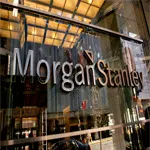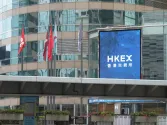Singapore
Staying Positive While Accepting Brutal Reality
Staying Positive While Accepting Brutal Reality
People who know me regard me as a naturally positive person, in that I typically view the proverbial glass as being half full rather than half empty. I am however also a realist who relies on empirical evidence to form opinions. These two different factions within me co-exist in an uneasy state of potential conflict. Obviously the current financial and economic crisis has put both my positive and realist states on an inevitable collision path.Nowhere is this more apparent than when I meet up with clients or have to speak at seminars to share my views on the market. While I would love to go out and tell investors what most of them would like to hear, namely that things will be alright and that financial markets will recover sooner rather than later, the realist side of me has been more domineering, as I lay out all the brutal facts as to why we believe it will take several years to undo the mess we find ourselves in today. Doing this however makes me feel like I am the harbinger of doom, as clients go away feeling more depressed. So before I continue, here is a quick warning to readers who just want to read about the positive side of things - skip the next few pages and just concentrate on the last paragraph!Economy in the doldrumsThe outlook for the global economy continues to be shrouded in uncertainty as governments grapple with how best to tackle the financial crisis, which has morphed into arguably the deepest recession since the Great Depression. The IMF has recently warned that global growth would slow to +0.5% this year, well below the +2.5% typically used to define a global recession. In addition, the International Labor Office recently forecast in its annual report that 51 million jobs are likely to disappear by the end of 2009 as a result of the economic slowdown, pushing the global unemployment rate up to 6.5% by the end of the year. In fact, the US unemployment rate is already higher than this figure, having risen to 7.6% in January, the highest level since 1992. The latest jobs report also showed that payrolls plunged almost 600,000 for the month, bringing the total number of jobs lost over the last 13 months to a whopping 3.6 million, the biggest slump in the postwar period.It is not surprising then that Americans are cutting back on consumption, scaling back on spending for the sixth month in a row in December as their savings rate rose to 3.6%. This represented a reduction in spending amounting to US$102.4 billion, or 1% less than the month before. While cutting back on spending and reducing debt levels is definitely a prudent step in the right direction for these over-leveraged consumers, these reductions are severely hurting businesses, forcing companies to scale back on orders and trim workforce. All this is having a detrimental effect on the earnings of companies, many of which have already announced sharp reductions in earnings for the last quarter and are preparing the market for similarly bad numbers in the quarters ahead.Unfreezing the financial marketsOne of the key issues that needs to be resolved urgently is a plan to unfreeze capital markets, so that banks can and will start lending again and provide much needed liquidity to the system. In this regard, the market was waiting with much anticipation for US Treasury Secretary Timothy Geithner to outline a comprehensive plan to solve the problem once and for all. In the end, they were sorely disappointed with the US$1.5 trillion rescue plan that he finally unveiled.At the heart of the plan is the creation of a public-private partnership fund amounting to at least US$500 billion to recapitalize the banks, and another US$1 trillion to support consumer and business lending. The government also intends to subject major US banks to a rigorous stress test to determine if they can survive the economic downturn - essentially weeding out the institutions that are worth saving from those that should just be closed down. The Treasury and the Federal Reserve obviously believe that these measures will be sufficient to stabilize the financial system.Unfortunately the markets did not share this confidence, as equity indices all suffered a sharp sell off following the announcement. Many commentators were unsatisfied with the lack of details provided, seeing this as a sign that the authorities themselves were unsure about how to solve the problem. We understand that one reason why the plan took its current form was to satisfy different factions with differing priorities - one group wanted to focus on how to free banks from their toxic loans, while the other wanted to announce punishments for senior bankers and to impose punitive measures on bank shareholders. The problem with this is that these two objectives are mutually exclusive: you cannot punish the banks and restructure the banks at the same time. In seeking a compromise, the government ended up with a plan that arguably lacked enough bite to truly satisfy either objective.While it remains to be seen if the announced measures will be sufficient to unfreeze the financial markets, it does seem that the same problems that plagued the TARP are still unresolved, key among which is how to find a mechanism for pricing the toxic assets on banks' balance sheets. As such, the government may find themselves forced to take much firmer action sometime down the road.Protectionism raising its ugly headTo make things worse, there is now a growing threat of protectionism as governments naturally adopt policies to help their local industries and citizens. At the recently concluded World Economic Forum in Davos, politicians were united in agreeing that protectionism was the biggest danger facing the global economy. The US is seen as a major culprit in this regard, as seen by the recent bailout of the American auto industry and the "Buy American" provisions in the current economic stimulus bill, which favours US steel producers. The risk here is that other countries may impose similar protectionist policies, causing a repeat of the 1930's when nations raised tariffs to protect their own industries, thus affecting global trade and damaging the world economy.To his credit, President Barack Obama realized the potential implications of this stance and acted quickly, saying he would alter the "Buy American" language in the economic stimulus bill. However, his political will is going to be stretched to the limit as his fellow politicians are pressured to help their local communities. Another disturbing development is the fact that some Senators have already taken this "Buy American" mantra to the next level, proposing a "Hire American" proviso for banks that receive government bailouts. The US is by no means alone in gravitating to these policies. The Spanish government has offered to pay foreign labourers to return to their home countries, and the Singapore government has come out with a jobs credit scheme that helps preserve employment for Singaporeans and permanent residents.Over-reliant on government interventionAll these unresolved problems are contributing to the uncertainty in the marketplace. Hopefully a lot of this uncertainty will be removed in the months ahead with the implementation of the various government initiatives. We however expect a rocky road ahead, as politicians continue to debate the best approach to address the problems. With the Republicans already putting up stiff opposition to the economic stimulus package, imagine the kind of resistance Timothy Geithner will face with his bank bailout proposal.It is always disconcerting to have your fate lie in the hands of a bunch of politicians, but this is the uncomfortable position we find ourselves in right now. Optimistic investors who are banking on a quick turnaround in asset prices are relying on these politicians to act decisively and quickly in coming out with the right policies to solve the economy's problems. However, the reality is that there is no quick or easy solution to the current mess we find ourselves in.Structural downturn may lead to a decade of lost returnsAll the above problems suggest the current recession may be a structural downturn that will take far longer to recover from than the usual cyclical downturn. This sparked us to go back in history to find similar “abnormal” periods where financial market returns were negative or flat over a prolonged period of time. We identified three such abnormal periods – namely the Great Depression of the 1930s, the Stagflation period in the 1970s, and the Japanese Deflation “lost decade” of the 1990s. The common observation from all these periods was that investors failed to get positive real returns over a five- to ten-year time horizon.The risk of a similar abnormal period repeating itself over the next five to ten years prompted a review of our investment strategies, particularly for our clients who have a shorter time horizon and who need to drawdown on their investments during this period. As a result of our analysis, we decided that we have to tweak our investment strategy and introduce a new set of portfolios (and management style) to cater to clients who have a shorter time horizon.So far this article has been dominated by the realist side of me, laying out all the brutal facts above, preparing you for the tough times ahead. The optimistic side of me however wants to end this on a positive note. While we are facing challenging times, there are attractive investment opportunities for long-term investors who can ride through volatility. I have absolute confidence in the strength of the human spirit to withstand adversity. After a period of cleansing and clearing out the excesses, the economy will undoubtedly continue on its former growth path and asset prices will inevitably recover. It may take a little more time and the journey will likely be a bumpy one, but we will be rewarded for our perseverance. -- Daryl Liew
Staying Positive While Accepting Brutal Reality
People who know me regard me as a naturally positive person, in that I typically view the proverbial glass as being half full rather than half empty. I am however also a realist who relies on empirical evidence to form opinions. These two different factions within me co-exist in an uneasy state of potential conflict. Obviously the current financial and economic crisis has put both my positive and realist states on an inevitable collision path.
BNP Paribas creates advisory services team for Asia
BNP Paribas Wealth Management announced the creation of a new Asia-wide Corporate Advisory Services team to respond to the needs of its growing entrepreneur and business owner clients.
Aberdeen and AIA launch investment alternative
An investment alternative that provides investors with life protection coupled with the opportunities to maximise the return from investing in mutual fund is launched in Thailand jointly by the Aberdeen Asset Management Company Limited (Aberdeen) and American International Assurance Company Limited (AIA).
MezzAsia Capital announces Midsouth privatisation
CLSA Mezzanine Management Limited announced the successful privatisation by Zhong Nan Limited of Midsouth Holdings Limited (Midsouth) and its delisting from the Singapore Stock Exchange.
BNP Paribas sets up Islamic fund group in Malaysia
After BNP Paribas Investment Partners (BNPP IP) was recently granted approval by the Securities Commission to set up an Islamic Fund Management company, it wasted no time in solidifying its presence in the Islamic market by launching its Islamic asset management group in Malaysia.
MUFG denies merger report with Morgan Stanley
Mitsubishi UFJ Financial Group (MUFG) denies having reached a deal to a time table or structure with Morgan Stanley for a joint operation in Japan.
AXA Life Singapore launches AXA DIMENSIONS
AXA Life Insurance Singapore Private Limited announced the launch of GoldenSaver and TargetSaver, collectively known as AXA DIMENSIONS, to offer clients 110 percent guaranteed cash payouts, up to 150 percent of insurance protection and unlimited potential investment returns.
Security takes the stage with deal
Despite tight market conditions, Nokia is experiencing a boom in its security appliance business as it undergoes a new type of growth. In December 2008, Nokia announced that it had signed an agreement for Check Point Software Technologies. The agreement gave Check Point the authority to acquire Nokia’s security appliance business unit. Both businesses have collaborated with each other for over a decade to deliver industry-leading enterprise security solutions. And this agreement it seems is a natural progression for these two companies. Nokia’s Vice President for Security, Greg Podshadley said that this transaction “will provide the best path forward for our valued customers and partners.” And Podshadley added that “the many synergies between the two companies will bring strengthened products and services to our customers and partners for years to come.”
Banks broaden their security horizons
The Head of IT security services at a leading Australian bank was interviewed about the security challenges facing his bank, from its investments to its success in detection technology, to ensuring a smooth system migration from a legacy environment to a new environment. The Head of IT Security Services highlighted the bank’s 300 percent increase in customer response time for its internet banking service and gets excited about the implementation of Nokia’s VSX firewall technology and the Nokia intrusion prevention system. Q. What do you see as being your most prominent security challenges in terms of your bank’s business security? And how do you intend to address these security challenges in the current security environment as well as in the future? There are a number of significant challenges affecting us right now in the IT business security industry. These challenges include new types of malware such as zero-day attacks which are unable to be detected by the traditional security systems. And these kinds of attacks have increased their hostility in the external threat landscape. And in the midst of emerging data leakage threats, there are criminals who are using different types of exploits to steal company intelligence and logon credentials. Q. What were the key business drivers that led you to look for a solution to address these significant security challenges?Our participation in high risk new financial markets led us to address certain prominent security challenges. But in addition to this, placing some of our business and technical functions offshore, having a faster speed to market and the prospect of reducing our operating costs were also taken into consideration.Q. What do you see as being an important part of a bank’s security infrastructure and what are some of the ideal solutions that a financial organisation such as your’s should put in place?There are a wide range of security features that most banks and financial institutions have in place such as firewalls, intrusion detection and prevention, malware detection systems, surveillance systems, fraud detection systems and forensics capability supporting investigations. Q. Before your bank decided to install a completely new system, what were some of the predominant technological challenges that your bank faced?The company required a massive re-working in order to support our new business requirements. At first, we didn’t have the ability to provide adequate detection capabilities, which meant that we required heavy investment in preventative technology.And there were also a number of other significant issues including disparate systems which were spread across multiple data centres, cumbersome management of technical systems, high costs and support issues.Q. Which products from Nokia’s diverse product range have you chosen to implement at your bank?We have implemented both the Nokia VSX firewall technology and the Nokia intrusion prevention system. And we are also using Sourcefire coupled with a tactical surveillance system, because the market is still yet to mature in SEIM technologies.Q. What are the key benefits of Nokia’s business security solution?It provides a defence in depth security model, real-time threat detection and blocking, faster deployment time to new business applications, enhanced management and ease of patch deployment. It gives your business the ability to manage a higher risk profile and to detect and respond to security incidents.Q. How did the bank arrive at such an important decision to choose one particular security infrastructure provider over the other? And how has this decision played a role in the improvement of the security infrastructure at your bank?While we took the firewall type into consideration, we initially had a small investment in Checkpoint. We settled with Checkpoint as our preferred firewall type, and then per- formed formal evaluation of Checkpoint appliances like Nokia, Crossbeam and Secure platform. A contributing factor to our decision was the life costs, the ability of the vendor to support next generation (VSX) technology, the commitment of the vendor to resolve issues promptly and a strategic partner that could provide a range of security products and services.Q. In what manner was the Nokia solution deployed in your security infrastructure?Two sites were configured as Active/Active with load-sharing across both sites. Large systems with high-end throughput were created in order to cater for extensive growth. In addition to this, all hardware will be configured with automatic failover for full redundancy.Q. How was the implementation of the Nokia solution received by your bank?Overall it went very well. We had some major issues which were quickly resolved by Nokia’s development teams. Nokia also managed to provide full, mission critical support precisely when it was needed. Migrating systems from the legacy environment to the new environment has also been a big challenge, mainly due to the lack of corporate knowledge on how the legacy systems are to be configured. As a result, we had to reverse engineer many of our systems to ensure a smooth migration.Q. How long did the implementation of the new solution take? And what were the key factors behind the success of the implementation process?The new solution was implemented in just over 6 months. We built a staging environment where we were able to test systems before placing them into production.We also had a fully qualified and experienced staff. Nokia also supplemented our expertise to ensure that we had the best chance of success and had direct access to Nokia’s full resources when we had any issues or problems.Q. How noticeable were the changes to the security infrastructure at your bank after the implementation took place?The changes were very noticeable. We now have a world-class security infrastructure pre-configured to lodge new systems as required by our business.We were also recently able to lodge a new on-line banking system within the security infrastructure over a few days, which was truly impressive. Our intrusion prevention system is operating well and we are using it to detect and block malicious activity.Q. Describe your approach to handling IP sessions and detecting and preventing threats. And how is the traffic handled differently now?We have several types of threat detection mechanisms, such as DDOS, external IDS, internal IPS and also Sourcefire analysis capability called RNA.All these systems are connected to our SEIM for event monitoring and correlation.These alerts combined with our surveillance and vulnerability management framework allow us to detect and manage threats based on their risk profile.Q. Have you noticed any changes to the network performance of your bank?We have achieved an amazing 300 percent increase in customer response time for our internet banking service. And our large Nokia firewalls now has at least 8 gigabytes throughput in addition to our IPS devices which are now capable of supporting our gigabyte requirements.Q. How has this new solution improved your bank’s security?We now have a next generation VSX installation which provides several security zones and a defence in depth architecture. And our IPS devices provide good visibility of threats and actively block suspicious activity as well as alerting us to unusual events. The combination of these alerts, performing event correlation and log monitoring has enabled us to provide a real-time alert capability that has already proven itself.Q. Did the solution meet your requirements?It definitely met our objectives and provided a stable, high throughput as well as a secure environment.
Mizuho concludes agreement with Dalian Industrial Zone
Mizuho Corporate Bank, Ltd. and Mizuho Corporate Bank (China), Ltd. concluded a business collaboration agreement with the Dalian Changxing Island Harbor Industrial Zone, Liaoning Province, China, on the occasion of the visit of a group of representatives of Liaoning Province to Japan. This marks the first business collaboration agreement that the Dalian Changxing Island Harbor Industrial Zone has entered into with a Japanese financial institution.
Tata creates first security consortium for Asian banks
Risk has always been a norm in the finance industry, and banks and financial institutions have learned to address its challenges. Convenience is the catchphrase of the internet: one can have access to all kinds of information anywhere in the world in just one click. However, this convenience has also benefited hackers whose intentions range from sabotage to shutting down an entire business ecosystem.
HSBC expands rural bank franchise to Beijing
HSBC has opened a rural bank in the Miyun County of Beijing, further expanding its rural banking franchise in mainland China. The Beijing Miyun HSBC Rural Bank Company Limited is the fourth HSBC rural bank to be opened since 2007, when HSBC became the first international bank to enter China’s rural banking market.
Morgan Stanley Private Equity Asia invests in Biotor
Morgan Stanley Private Equity Asia, the Asia private equity group of Morgan Stanley, has invested Rs. 182 crores (approximately US$38.5 million) in Biotor Industries Limited, India. This investment in India is the first for Morgan Stanley Private Equity Asia and is part of the Fund’s long-term investment initiative in the country.
Ipac: ‘2008 – tough year on many fronts’
We are deeply conscious that the last year has been exceptionally difficult for investors. The impact of the unfolding global financial crisis has been brutal on capital markets, producing exceptionally weak returns for most asset classes. All long-term investors have had to endure sharp declines in the value of their portfolios.In many ways, 2008 was a year when the financial system failed and the complacency of virtually the entire financial sector came home to roost.
ING closes life insurance sale to Fubon Financial Holding
ING announced that it has closed the sale of its Taiwanese life insurance business to Fubon Financial Holding Co. Ltd., a leading diversified Taiwanese financial services company.
BNP Paribas appoints new officers for Hong Kong & Seoul
BNP Paribas Investment Partners has announced the appointment of Jean Audibert as president of New Markets Asia (Hong Kong) and Patrick Mange as deputy CEO of Shinhan BNP Paribas Asset Management (Seoul).
























